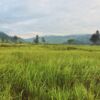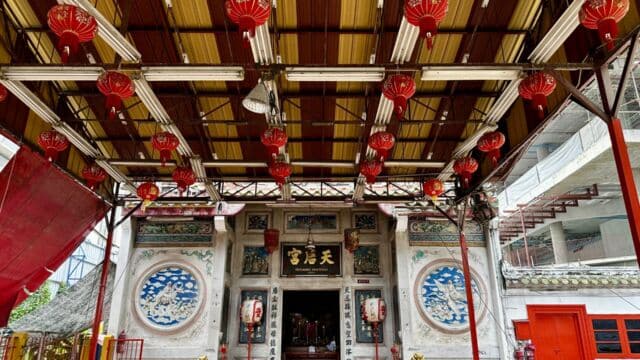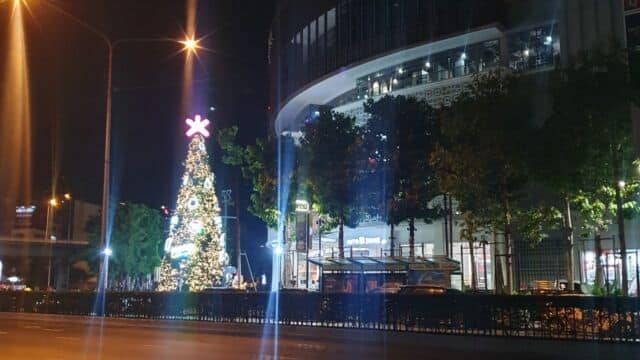A Passing Moment in Soi Song Phra
Photo: Christian Benitez
Soi Song Phra | 2,386 words
Down at the end of Chulalongkorn Soi 9: past the crowd of students in front of I’m Park lined up to get their hotpot after class; past the sudden burst of green that is Centenary Park, the nearby Samyan Market, and the adjacent Banthant Thong Fire Station; past the flower-themed dessert place that makes the coffee shop beside it look conspicuously somber; past the quaint music and sports store run by an old couple; past a Vietnamese restaurant that, oddly enough, does not serve the supposedly staple pho; past the concrete overpass where one can get a view of the traffic jam at Rama IV Road in the afternoons — past all this, and there, at the edge of the Bang Rak, in its northernmost Maha Pruttharam subdistrict, there is a nondescript corner, like any other corner in the city, where one can take a turn into an alley.
After the bustle of the main road, with cars honking and flashing red rear lights, and motorcycles impatiently sneaking between larger vehicles, and street vendors on the sidewalk offering sliced fruits and cooked meals packed in small blown-up plastic bags sealed with red rubber bands — Soi Song Phra surprises me with its sudden quiet and unremarkability.
Nothing really is striking about this alley. After the Bangkok Bank branch at its corner, there is no exquisite massage parlor waiting to be discovered by wandering farangs, nor outstanding pad thai place that only locals would know. Soi Song Phra might as well be any other laneway. Rows of two- to three-story houses, high enough to cover the entire backstreet in shadows, provide reprieve from the heat. Small potted plants commonly sit in front of them. Wide windows above are covered with grilles and awnings that somehow block the glare of the sun, with clothes left out to dry. Some of the houses are shophouses, often selling retail goods, with one or two even having a pile of secondhand clothes, usually womens’, in a box or on a table out the front, 50 to 80 baht apiece. Further down the alley, there is also a tire repair shop, a laundromat, a pharmacy, a tailor shop, and a beauty salon, which all seem to be frequented only by local residents. Passing through this random alley, time seems to slow down, or at least finally move at a pace that is mundane, which is a far contrast from the hurried speed of much of the city, epitomized by the whizzing trains that cut across the capital.
I’ve accidentally found this soi a little over five months after moving to this city to study. An ad about an upcoming book sale showed up on my feed and so I started Google Mapping my way to the Neilson Hays Library, a 30-minute walk from my place that I didn’t mind, not only because of my crazy love for books, but also thinking that I could use the time away from writing: to temporarily get out of my own head, if only to ultimately move yet again toward words. During my first few months of settling in Bangkok, looking for cheap secondhand English-language books about Thailand has become an intimate way for me to get to know the city. Certainly, my circumstance is rather strange: I’m a Filipino studying comparative literature in Thailand while being essentially illiterate here, given my lack of knowledge of the local language. But books, especially fiction, have allowed me to feel and know the city a little better, however obliquely or briefly, beyond the language wall I have yet to cross. And more than devotedly reading them in my room — how I spent most of the sweltering afternoons during the peak of my first hot season in the country — the pursuit of these books lead me to quiet corners of Bangkok.
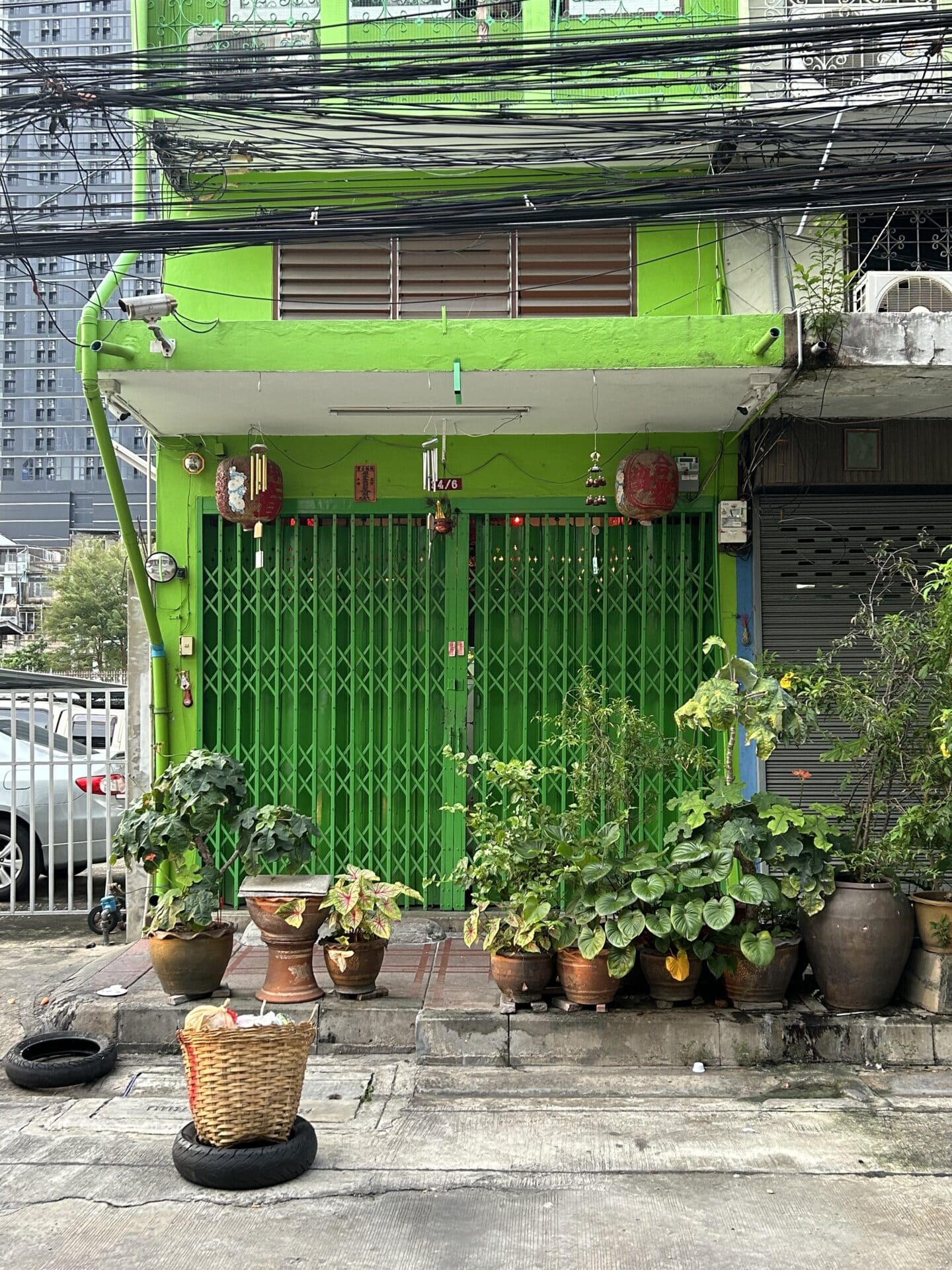
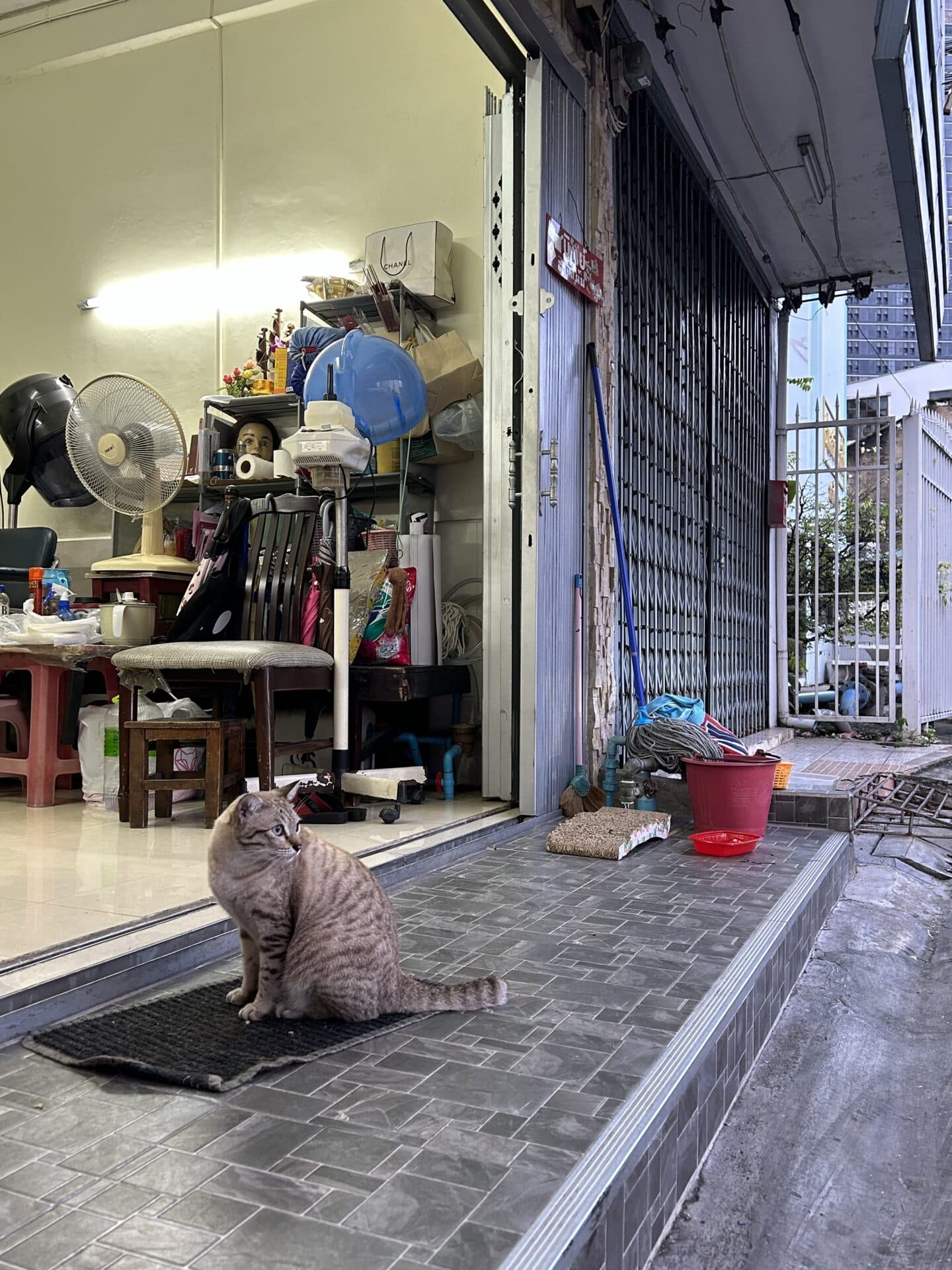
From the little Thai I know, being able to count up to hundreds and having come across a handful of key terms in reading materials from my Thai Buddhism and Thai Worldview classes, I soon realize that the name of this alley, Song Phra, simply translates to “two monks.” This phrase, in turn, easily brings to my mind the following Buddhist parable, from one of those classes:
Once there were two traveling monks, one older than the other, who came across a woman who was about to pass through the same river (it might as well be Chao Phraya?) as the monks were. The woman asked them if they could help her through the strong currents to safely get to the other side. The monks, having made their monastic vows, were supposed to never touch the woman, any woman — and yet, the older monk simply picked her up without any hesitation, carried her on his back across the river, and set her down on the bank before continuing his journey with his companion. The younger monk was horrified at his elder’s actions but did not say anything about it until hours later, when he could no longer keep himself from asking his elder why he broke his vows for a stranger. In return, the older monk only asked the younger monk another question: he had long left the woman behind at the riverbank, hours ago, so how come she appeared to be still with them, among them, with the younger monk essentially carrying her on his own shoulders? The parable ends there, with the younger monk yet to reply to the older monk’s question. This remark is commonly remembered as highlighting the importance and power of letting things go.
In this brief moment, I am somewhere between cities of two different countries.
Another recollection about the phrase “two monks”: a Chinese proverb this time, which says that one monk will carry a pail of water up a hill, and so will two monks, but a third monk can make all three of them not complete the task at all. It’s supposed to be a counsel regarding greater numbers being not necessarily beneficial, given the possibility of easily passing responsibility — and hence, shifting blame — within a group. This same proverb was reimagined in the short film Three Monks produced by the Shanghai Animation Film Studio after the Cultural Revolution of 1976. There, the proverb was turned into a parable on cooperation. After accidentally knocking a candle over as they argued about who should go down the hill to fetch some water, the monks’ temple was inadvertently set on fire: the three of them worked together to put out the fire and save their place. The fire made them realize the value of teamwork. In the end, the three monks created a pulley system that made water more accessible for everyone in the temple.
That these proverbial monks are meeting in the name Song Phra makes more sense when considered in relation to the history of Bang Rak. Originally a series of settlements along the Chao Phraya River before the founding of Bangkok, Bang Rak expanded further inland with time, especially from the latter half of the nineteenth century, and became an important commercial center. In this port district, people of various foreign backgrounds — ranging from nearby Vietnam, Laos, and Myanmar, to Malaysia, India, and China, and even as far as Portugal, France, and other Western nations — live among Thais. And so, aside from the business establishments that flourished in the area after the construction of major roads such as Chaeron Krung, Si Lom, and Sathon, Bang Rak also came to be known for its diverse places of worship, which include the Hindu Sri Mahamariamman Temple and Masjid Mirasudden around Si Lom Road, the Catholic Assumption Cathedral on the New Road, and the Protestant Christ Church on Convent Road. Other buildings, such as the East Asiatic Building, Customs House, and the Neilson Hays Library that I’m on my way to, in their architecture visibly bear traces of the West, but coexist seamlessly with structures of more traditional design. It all serves as material proof of how this district accommodates the world beyond Thailand. All in all, the place is truly contemporary — modern and traditional at the same time.
It’s a stark contrast, but not surprising that at the southern end of Soi Song Phra, past an unexpected parking lot, low tables of vegetable vendors during daytime, and a sharp bend where the electrical wires appear to thicken above, it is as if I can finally hear again, as the sound of the busy city suddenly resumes, with cars and buses and tuktuks and motorcycles moving a little too fast again here at Si Phraya Road. This particular corner exemplifies a certain kind of tension that captures an essence of Bangkok. A 7-Eleven is in the right-hand corner, a kind of temple of solace from the heat, and in front of it a few vendors have parked their wheeled stalls to sell grilled pork and sausages, red and green curries in plastic bags, and sometimes bean desserts too. On the left is an open block containing another cluster of food stalls (among which is a really good, and fairly cheap, kebab place), with tables and chairs under canopy tents for dining-in customers, almost always full especially during early evenings. And on the opposite side is a gas station and a couple of high buildings, and behind them even higher ones, prefiguring the skyline of Bang Rak district that becomes visible as I move further toward its center.

But this, too, is a corner that is really like many other corners here in the city, where people can encounter a sort of mundaneness that they might not even be bothered to think consciously about. It seems like the corner where I have come from, between Chulalongkorn Soi 9 and Rama IV Road, going to Soi Song Phra. It also seems to be the corner where I am going, between Soi Phutta Osot and Naret Road, heading to Surawong. And although this appearance of similarity might easily be ascribed to my being not fully familiar with Bangkok, living here only a few months now, something has to be said regardless about the repetition here in this city, but one where each iteration nevertheless offers something distinctive to be surprised about. For instance, once, turning at the corner between Soi Anuman Rajdhon and Soi Naradhiwas Rajanagarindra 1, in front of yet another 7-Eleven, I found an old man selling potted plants on his wheeled stall: the common pothos, spider plant, jade plant, and peace lily, but also daisies, orchids, and even red roses — or at least, what I thought were red roses. I had to stop myself from getting another plant, as it’s already tricky enough to manage the four succulents I have back in my dorm, not because they are difficult to look after, but because I always need to take them to someone for plantsitting whenever I go back to Manila between term breaks.
Because at the end of the day, for better or for worse, I know that I will always go back to the Philippines — not necessarily because I have unwavering love for the country or that our mangoes are the best there are (I have been persuaded otherwise, and easily so, by Thai mangoes in the past few months), but simply because of some of the people who live there. A place, after all, becomes the world when you love some of its inhabitants, it was said — or something along those lines. Since coming to this city to study, I have been thinking about its quality of worldliness, the hospitality of unfamiliar streets that welcome me regardless of the irony of my being an illiterate literateur here. But lately, the Philippines also seems to insist itself, seems to argue for itself, wants me to think about it by appearing whenever I least expect it. Just like this afternoon, going for a trip to the Neilson Hays Library for its annual book sale, walking at the end of Chulalongkorn Soi 9, and through the concrete overpass over Rama IV Road, taking a turn and suddenly, here it is: Soi Song Phra with its sudden quiet and unremarkability, an alley that might as well be any other alley here in Bangkok, but more crucially, an alley that might as well be an alley back in Manila. In this brief moment, I am somewhere between cities of two different countries, and if I try to look, really try to look hard enough, I am also back in my hometown, in San Mateo.
Another recall prompted by the name Soi Song Phra: one of the lesser-known poems by the Filipino poet José Garcia Villa, an immigrant himself in the United States, which describes two monks, one in pink robe and another in blue, eating pink and blue raisins, respectively. And as each devour their colored raisins, the joy, the observing persona claims, “was different: [it was precisely] to see the blue and the pink counterpointing.”
It is now that I understand more intimately José Rizal, who in his novel Noli me tángere described the protagonist Crisostomo Ibarra — himself, like me, once a student overseas — seeing, upon looking at the botanical garden in Manila, the botanical gardens of Europe. But I also realize that what Rizal calls the demon of comparison, that spectre that unsettled the returnee to a sharp realization that his beloved Philippines had been left leagues behind by the imperial world, can offer me comfort nevertheless. That I can still remember where I come from, and that I can still see it from where I am now, for now.
But there is nothing grand about this instance of looking: I turn away, walk on and the moment is gone. Never will I feel the same way again, no matter how many times I’ll pass through the same soi, trying a little too hard to repeat the feeling I’ve felt this one afternoon. But it will have me thinking about this soi for weeks. It will make me write all of this.
© Christian Benitez
Commissioning editor: John Bengan



